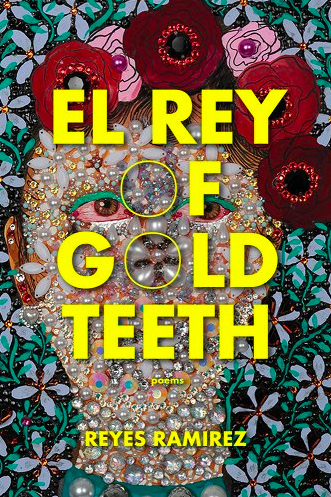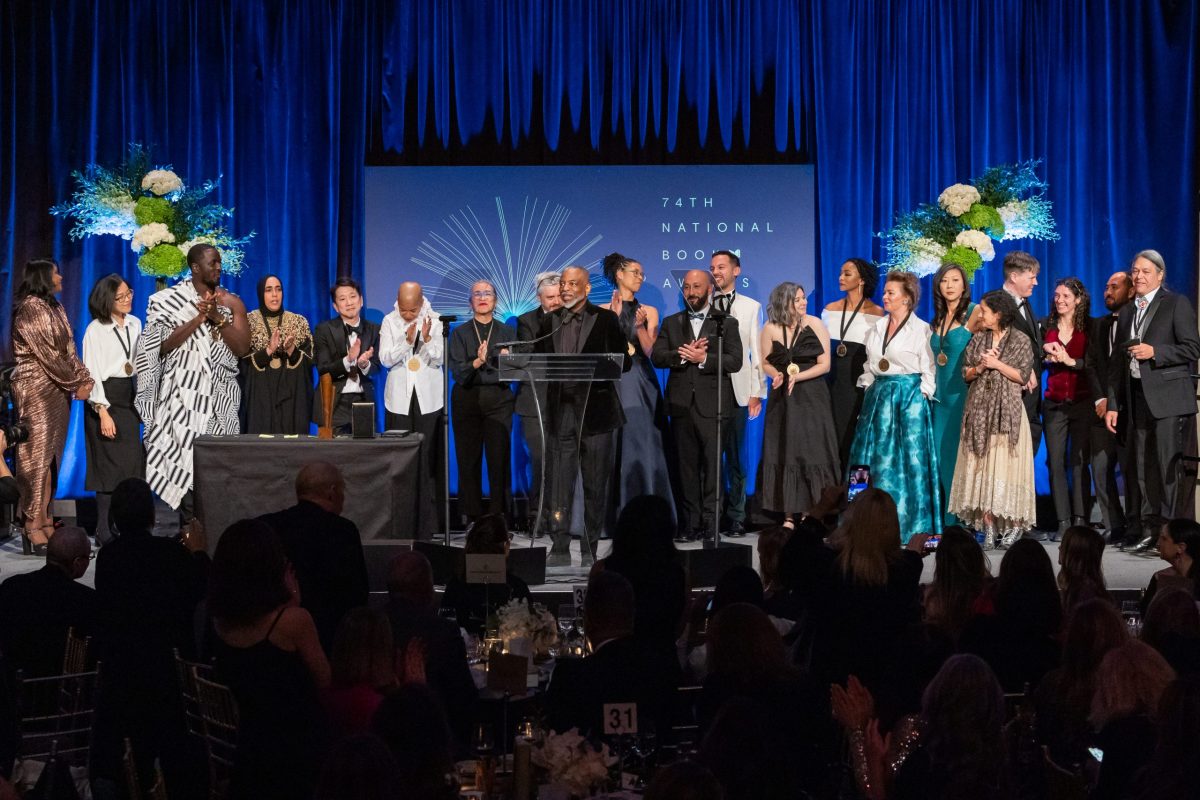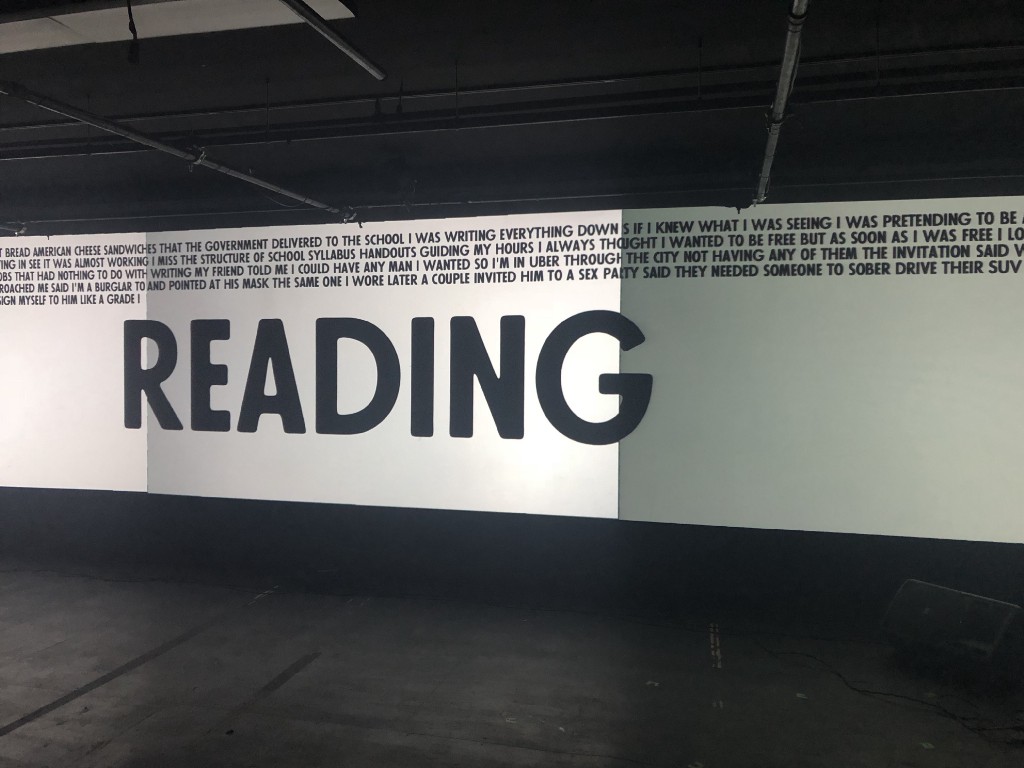Reading Lists
10 Daring Bilingual Poetry Collections
Reyes Ramirez recommends poetry with a healthy disrespect for English that toss away rigid notions of language

If we label a work as bilingual for using at least two languages, then how do we quantify a work as having more than one language? For example, would one call Megan Thee Stallion’s song “Hit My Phone” bilingual with these lyrics: “Party like a vato, shots of the blanco / Guaranteed to knock a – out his zapatos?” In a traditional sense, probably not. In a creative sense, I think so, and in more ways than one. By extension, is Beyoncé considered a bilingual artist for singing at least six songs entirely in Spanish (“Irreemplazable,” “Oye,” “Bello Enbustero,” “Amor Gitano,” “Si Yo Fuera Un Chico,” and “Mi Gente”)? Why not?
A possible answer is that there must be a concerted, consistent effort to navigate languages across one’s practice or work to be considered bilingual, right? But then, what is the threshold for one language to be different than another? It’s political. T.S. Eliot’s The Waste Land requires navigating all sorts of languages, dialects, and references to be fully understood. The poem, published on its own in book form in 1922, is taught in college English courses throughout the U.S. as regularly as MLA Format without the label of being a work of bilingual literature. Yet, you won’t find many poems by poets of color taught this way, on their own terms, but with a label demarcating an otherness, without pointing out the use of languages separate than what is “normally” spoken. In fact, when The Waste Land was taught to me in a 3000-level ENGL course, the inability to understand every language, dialect, and reference was not a bug but a feature. And yet, if I received decent compensation every time someone in a workshop told me they couldn’t understand my work because of the Spanish and Spanglish as a criticism, then I wouldn’t need student loan forgiveness. My point? I threw away the rules to that game long ago, and I’m ready for a new playing field.
I don’t try to quantify languages anymore insomuch as try to enjoy how language can help the poet and the reader access that which one couldn’t otherwise in one language. To do that, I seek out and write work that prioritizes playfulness, daring, and a healthy disrespect for English. That last part is crucial. The fact that I write this in English is the result of separate yet linked colonial projects that displaced my mother and father from their countries to the very one I write in now. I wish I could say Spanish is some sort of refuge for me, but it isn’t. It just happens to be the result of colonization in that part of the Americas. Thus, to toss away rigid notions of language is my duty. I play across languages, such as English, Spanish, and Spanglish, in El Rey of Gold Teeth to make language a liberating force rather than a limitation, if such a thing is fully possible. Here are some poetry collections, out of many, many more, that helped me see the possibility of languages and forms as vessels for radical hopes and consciousness.
Slow Lightning by Eduardo C. Corral
Ever since I read “In Colorado My Father Scoured and Stacked Dishes,” I’ve taught it every chance I’ve gotten. I start off by asking students how many languages they can identify used in the poem. The common answers will be, of course, English and Spanish. I then ask the class to explain to me what a Jonagold looks like, or a Braeburn. To explain to me what a frijolero is. You’d be surprised how many different groups of people know what greaser means rather than what a Cameo apple looks like.
I then ask why that is, why the language of hate is more imaginable in the mind’s eye than a fruit. Who would know what each of those words mean? I explain we navigate all sorts of languages every day of our lives, that language is relative and there are things we know and don’t know yet we accept. We learn cuate is Mexican Spanish borrowed from Nahuatl. I ask them again how many languages are in the poem. I ask them how many languages they truly know, then. In knowing the limits and bounds of our language begins possibility.
Flood Song by Sherwin Bitsui
In a lecture by poet laureate emeritus of the Navajo Nation Laura Tohe, she explained that the Diné word tó could be translated to water in English. Tó drips down seven times on the first page of Bitsui’s Flood Song. What follows is the line: “I bite my eyes shut between these songs.” Bitusi writes tó to serve as the oncoming flood of water that bursts open the walls of the English language, facilitating maverick uses of English that would be admonished elsewhere, like when an immigrant repeats a common phrase “incorrectly.”
Can eyes be bitten shut? No? Do you not understand what the line is saying anyways? We then see that communication and language, though linked, are not inherently congruent. The point is now we have a new way to play with a colonizer language. “This windowless house marrows my veins with thinking.” Did you know you could do that? That you can break the rules of a language and still be understood? It’s ok. Imagine the possibilities. “Coyote howls canyons into windows painted on the floor with crushed turquoise.”
The Wild Fox of Yemen by Threa Almontaser
Different languages parse out information in different orders. In Spanish, adjectives often come after the noun. A red apple would be la manzana rojo, becoming the apple red when translated directly back, transforming meaning. In Arabic, sentences are read right to left as opposed to the English left to right. There’s a poem in Almontaser’s debut collection, titled “Heritage Emissary,” where she does just that, writes lines of English right to left like in Arabic: “part I hush tongue my floats lake settled a so / need I steam senseless of shrouds spout and lips my[.]” This comes in the middle of the poem, wherein lines are read left to right. Why not read every line in both directions? It is through the disruption of language we explore every possibility.
The Wild Fox of Yemen has many moments like this that make me question the possibilities of book publishing in containing multiple languages. The collection features Almontaser’s translations of Yemeni poet Abdullah Al-Baradouni, untranslated and translated Arabic and English, and photographs. This nuance to provide as many contexts of a poet’s language, written and visual, allows one to parse out vulnerabilities, strengths, and just because. That is power.
Come Clean by Joshua Nguyen
To me, bilingualism isn’t limited to literally using more than one language. Sometimes, it is having to navigate how one language fits into another, how one language’s limitations can facilitate or stunt one’s flourishment. Joshua Nguyen’s debut collection Come Clean features a series of poems in the American lục bát form, a variation of the Vietnamese form meaning “six eight,” referring to the alternating lines of six and eight words. In a traditional lục bát, Nguyen explains that the “sixth word of the six-word line rhymes with the sixth word of the next line, which consists of eight words…”
Nguyen, however, notes that the Vietnamese language uses “mostly monosyllabic words with different diacritics…” and his American lục bát form utilizes polysyllabic English words “incorporating internal rhymes” while being adhered to “as tightly or as loosely as one would like.” The poems in the American lục bát form detail the cooking process of Vietnamese food as taught by a prior generation, creating a new self from what’s been given. It is this negotiation of languages and forms across nations and traditions that, to me, define the spirit of bilingualism which, here, allows access to a voice both through and beyond English.
Africanamerican’t by Ayokunle Falomo
Poetry and bilingualism can also show how languages flourish despite another. A childhood memory of mine is sitting down with my mom to look at immigration forms. I had to go line by line, box by box, and conjured the best translations of bureaucratic English. All I know was that that paper, and the words printed on them, had power over us. It was from an early age I learned that language can force others to be defined in certain ways. This is not an issue unique to Latinx communities. Ayokunle Falomo, of Nigerian descent, showed me how other communities can navigate the same issue in their languages.
I first encountered Falomo’s series of poems regarding the immigration registration process, namely “ALIEN REGISTRATION, or the DS-230 is an animal with 2 parts,” in his chapbook African, American. The poem takes an immigration form and interprets it with poetry, an act of resistance and healing that demonstrates how bilingualism can be a politically liberating force in poetry. His collection Africanamerican’t, which includes much of the chapbook, expands upon this notion of navigating languages, including legal and poetic forms, as a journey towards self-actualization on one’s own terms.

Matria by Alexandra Lytton Regalado
Another aspect of bilingualism is having access to entire concepts and cultural knowledge beyond one language that can interplay with one another. Lotería, for example, is often erroneously described as “Mexican Bingo,” as is Día de los Muertos as “Mexican Halloween.” These gross simplifications, which take reckless liberties with translation at best, erase the complexities of Latinx communities, especially when it comes to our shared and divergent experiences. Lotería is a shared one.
Matria by Alexandra Lytton Regalado, of Salvadoran descent, features a series of poems that explore lotería in a way that is transformative yet familiar. Common tropes of lotería include verbiage before calling out the card, often including mythology or stories or riddles. Regalado, however, redefines the game as a poetic exercise in self-definition and nation building. Each poem’s title takes the form of a traditional lotería card’s label in Spanish but selects entirely new subjects. Though each poem has a succinct line that sets up the premise, they also take various forms, ranging from prose poems to free verse to combinations. It is this playfulness with concepts in different languages that allow a poet to explore the familiar in new and daring ways.
Homie by Danez Smith
Bilingualism calls attention to what aspects of languages are accessible and inaccessible. This can range from one being unable to roll r’s to understanding, or not, contexts specific to regions and time periods. Though variations of English can be called dialects or vernaculars, my work is mostly in English but still often gets labeled “bilingual.” Why? Perhaps because of its inaccessibility to those who cannot understand certain levels of Spanish and Spanglish?
If inaccessibility, for whatever reason, is a defining facet of bilingual work, then Homie by Danez Smith plays with this. To start off, Homie is not even the book’s true title. Its true title is inaccessible to me and non-Black people in general. Smith’s navigation of their cultural language reveals a nature of consciousness that white poets have attempted to capture unsuccessfully, such as William Blake and John Berryman. That is, language is tied to life and community that carries rules and customs that incorporate violence, power, and joy. People. If you aren’t part of that community, then you simply cannot play in it. Smith’s Homie also features poems such as “my bitch!” that explore different meanings in different contexts. If that’s not bilingualism, then what is?
Thresh & Hold by Marlanda Dekine
Gender can be enforced by language, particularly in English and Spanish. He, she, his, hers. El, ella, los, las. Next thing you know, a chair has a gender for some reason or wishing to incorporate more genders becomes a political issue. Sometimes, the rigidity of European-centric language must be cast aside to facilitate a grander vision or traditions of language must be salvaged or empowered. I contend that Spanglish disrupts two colonizer languages to facilitate the growth of community and, by extension, the self. I believe for Marlanda Dekine, Gullah-Geechee does the same.
There’s a point in Dekine’s debut collection Thresh & Hold where they begin using Gullah-Geechee pronouns, namely e/em, in their poetry. The poem “Grain Memory” has lines such as: “What do you know about? E asks. / E bends e old body down […]” It is through the incorporation of linguistic traditions from one’s familial history that the self can be explored fully. It is through this bilingualism that the self can be most honest, where the poet can honor the past and present to build a future.
Catrachos by Roy G. Guzmán
Guzmán will invent words such as “Queerodactyl” and run with them as far as they can go, placing words into sequences that they maybe shouldn’t go but who cares? “Crude oil gushes out her lumbar piñata, / Tektites buck to a spiked / prerecorded message from bill collectors.” For immigrant communities, language is a tool and tools can be used for anything in a pinch. You wouldn’t use a knife to open a door or a screwdriver to soften a steak, but you must use what’s available to get where you need to go.
Otherwise, how would you get lines like: “Twerking in church, / I outperformed the candles / diarized in the simpleminded annexation. Wussup, / Blastoise / with the veiniest homebound / pika-pika aim?” Across from the playful is the serious. In “Self-Portrait According to George W. Bush,” subsections have English and Spanish titles that mirror the other, such as [ACEITES/WATERBOARDING] or [COLORES/DRONES] wherein an Asian restaurant menu will have Spanish translations and prices. What else is language other than for us to fuck around with?









